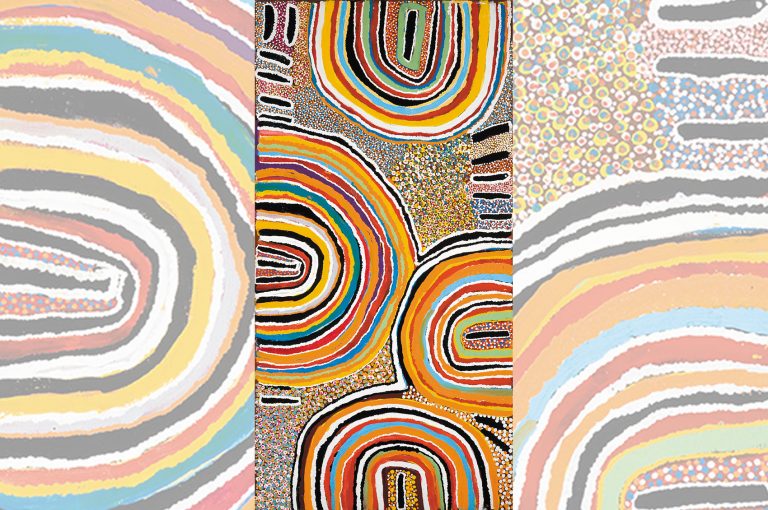Balgo. In Australia, it’s a word that conjures color and exuberance. It invokes an art which is both ancient and contemporary; both abstract and yet redolent of landscape; both spiritual and political.
When acrylic paintings from Balgo, deep in the Western Desert of central Australia, first appeared in the 1980s, they shook up what the world understood as ‘traditional’ Indigenous art, and disrupted our complacency about what was contemporary about contemporary art. Bold, bright, and colorful, the paintings told stories of the land—what Indigenous Australians call ‘country’—in a way that seemed utterly modern, apparently abstract, and quite exceptional.
But, like the groundbreaking paintings from Papunya in the Central Desert that had hit the international spotlight some years before, Balgo art presented a paradox. Deeply conventional, in the sense of conveying important Dreaming stories and tribal law, these paintings were some of the most mythologically intense and traditional the Indigenous peoples of Australia had yet produced. And yet they were being made by contemporary people, using new acrylic media, and in a style that seemed to recall Western modernist abstraction.
Before long, it was this very paradox that began to contribute resoundingly to our understanding of contemporary life, art, and spirituality in Indigenous Australia. In short, art from Balgo is a revelation; an art that is a statement of survival, not only of a people, but of their religion and law, their land and their spirit.
Balgo: Contemporary Art from the Balgo Hills is presented by the Australian Embassy Manila.
